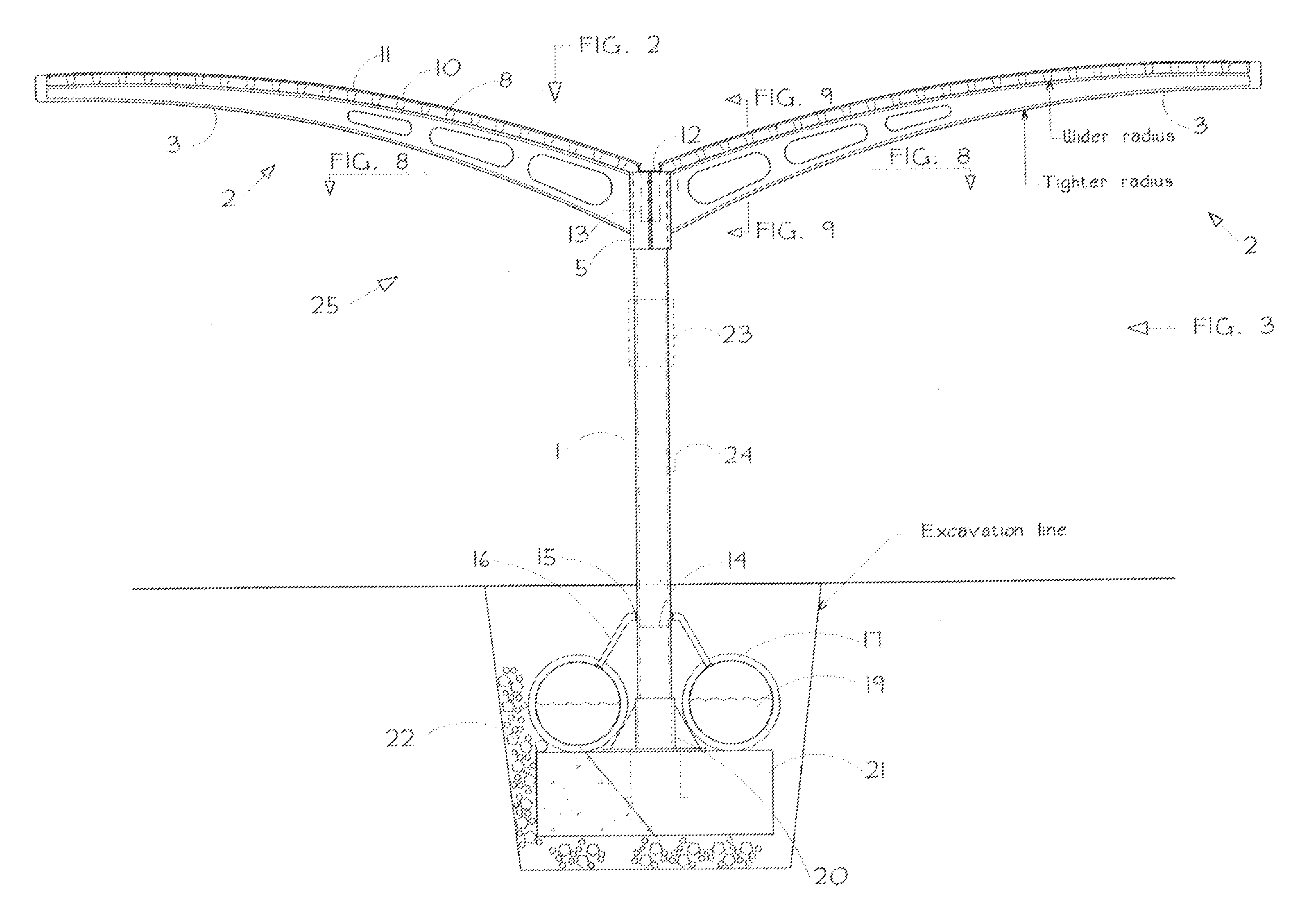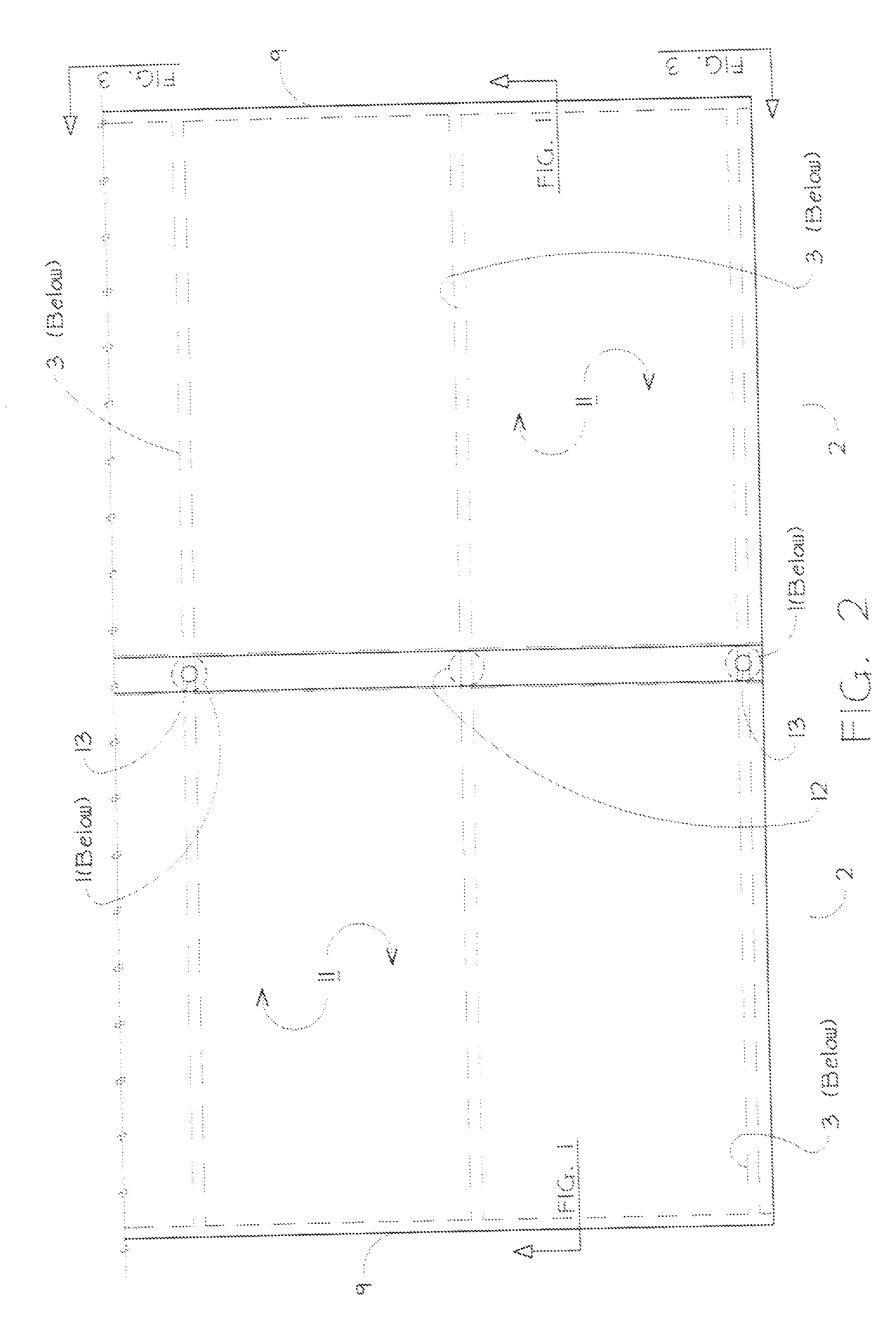Arcuate-winged solar canopy assembly
- Summary
- Abstract
- Description
- Claims
- Application Information
AI Technical Summary
Benefits of technology
Problems solved by technology
Method used
Image
Examples
Embodiment Construction
[0034]FIG. 1 shows a preferred embodiment of the invention. In FIG. 1, canopy assembly 25 is composed of support column 1 which extends substantially vertically from below ground level to a height sufficient to permit the parking of vehicles or storage of equipment under attached wing member 2. Support columns 1 may have a cylindrical shape, although other various shapes may be employed, for example open box, octogonal, hexagon and the like. Wing member 2 is composed of two, arcuate, structural arms 3 attached to support column 1 at one end by means of wing connection flange 5. Mounted on wing structural arms 3 are structural canopy decks (unnumbered) composed of three elements 8, 10 and 11. The structural canopy decks are composed of corrugated structural sheet 8 made of fiberglass, aluminum or fiber reinforced plastic for example. The decks are positioned on structural arm 3 such that the deck's parallel ridges and furrows run parallel to the support columns as can best be seen in...
PUM
| Property | Measurement | Unit |
|---|---|---|
| Weight | aaaaa | aaaaa |
| Power | aaaaa | aaaaa |
| Weight ratio | aaaaa | aaaaa |
Abstract
Description
Claims
Application Information
 Login to View More
Login to View More - R&D
- Intellectual Property
- Life Sciences
- Materials
- Tech Scout
- Unparalleled Data Quality
- Higher Quality Content
- 60% Fewer Hallucinations
Browse by: Latest US Patents, China's latest patents, Technical Efficacy Thesaurus, Application Domain, Technology Topic, Popular Technical Reports.
© 2025 PatSnap. All rights reserved.Legal|Privacy policy|Modern Slavery Act Transparency Statement|Sitemap|About US| Contact US: help@patsnap.com



